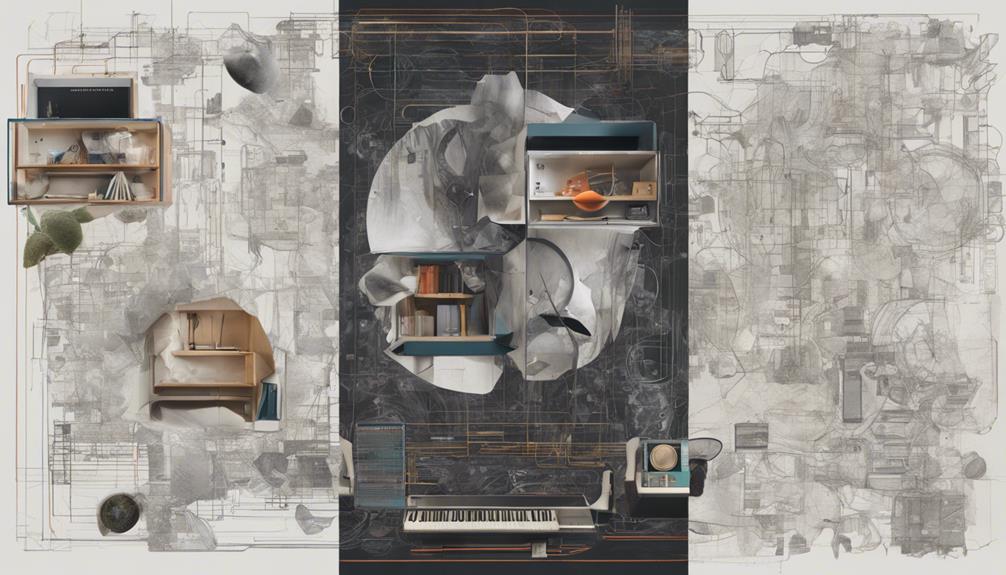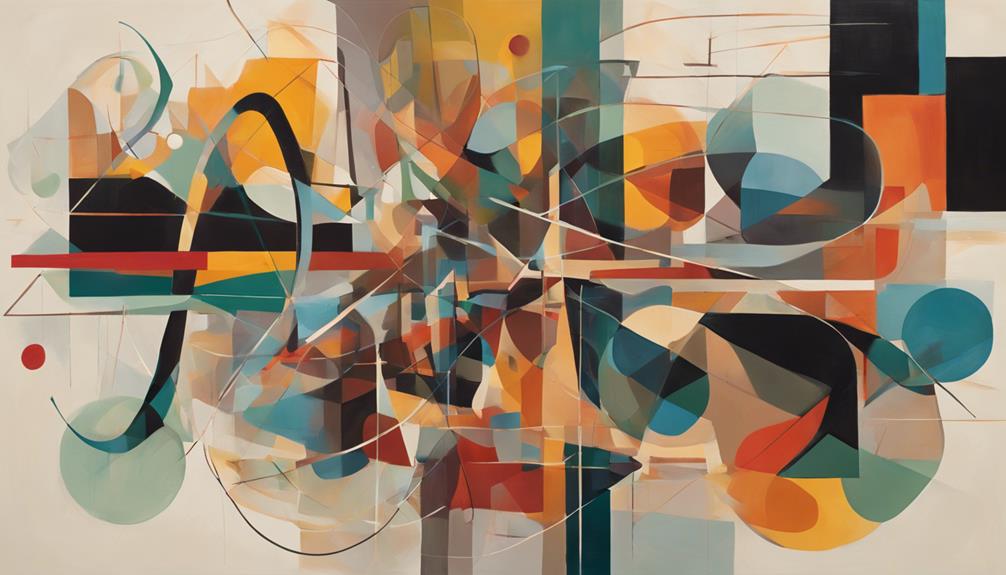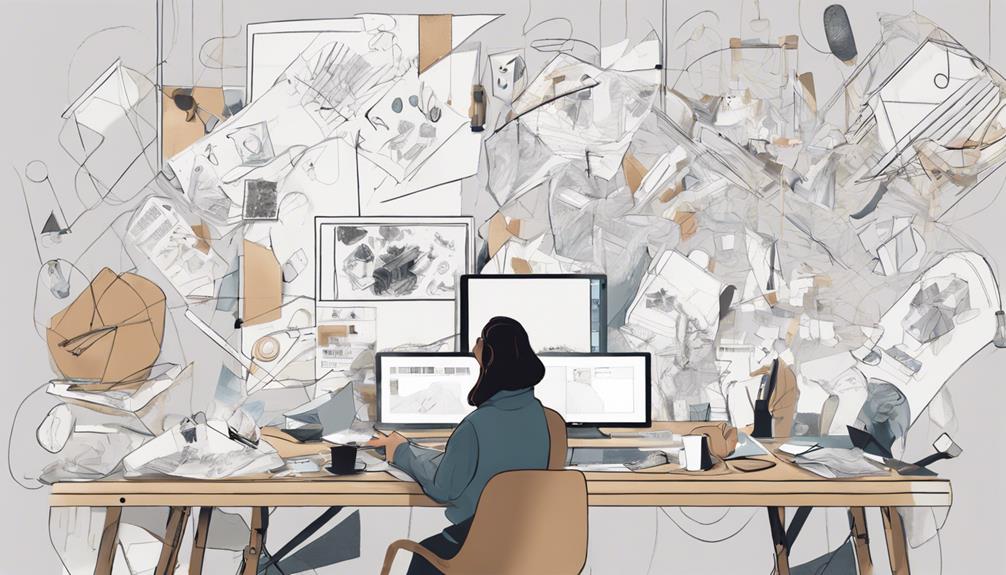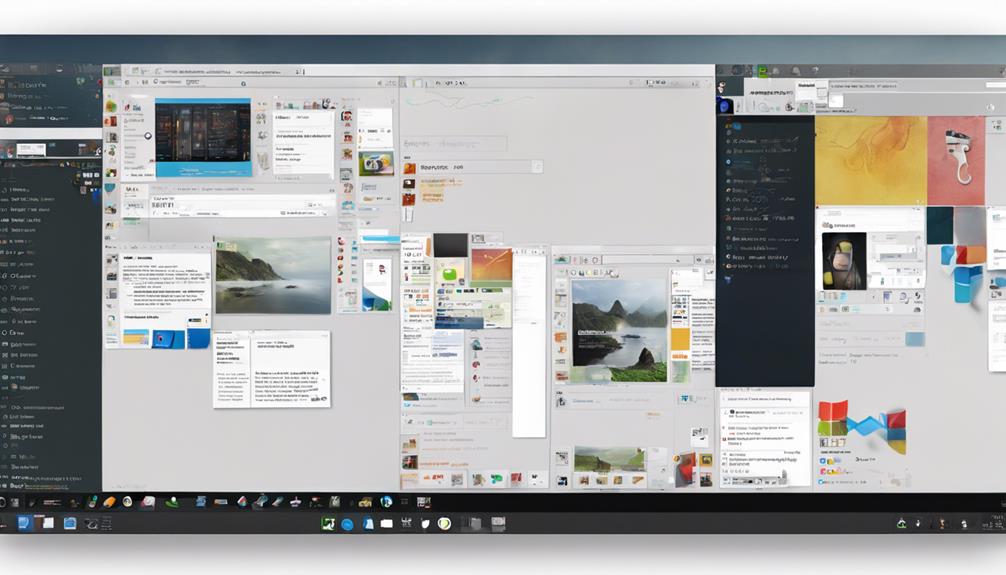A well-designed layout is the backbone of effective visual communication, and for beginners, it is crucial to understand the fundamental principles that bring together typography, composition, and hierarchy to engage and inform audiences. Key elements include grids, negative space, typography, and balanced visuals. Typography mastery guarantees readability, while a well-balanced composition guides viewer attention. By considering these vital design elements and mastering visual flow, beginners can create impactful designs. As we explore the intricacies of layout design, a deeper understanding of the core principles will reveal themselves, leading to a more nuanced and effective visual communication strategy.
Key Takeaways
- A well-planned layout considers signal integrity, power distribution, and thermal management for optimal performance.
- Effective use of grids, negative space, and typography creates visual hierarchy and enhances readability.
- Balancing composition and visual hierarchy guides viewer attention and emphasizes important elements.
- Consistency in design elements ensures cohesion and professionalism in the layout.
- Seeking feedback and refining the design through targeted adjustments enhances visual communication.
Understanding PCB Layout Fundamentals
At the heart of successful printed circuit board (PCB) design lies a deep understanding of PCB layout fundamentals. This involves strategically arranging electronic components to guarantee seamless circuit functionality.
This fundamental aspect of layout design requires a thorough comprehension of key elements, including signal integrity, power distribution, and thermal management.
A well-planned PCB layout is essential, as it directly impacts the performance of the board. Component placement, routing, and layer stackup are critical design considerations that can make or break the functionality of the PCB.
By following industry standards and adhering to design guidelines, beginners can create effective PCB layouts that minimize signal interference, reduce noise, and optimize trace lengths.
With the aid of PCB design software, designers can efficiently create and refine their layouts, ensuring a high-quality final product.
Essential Design Elements to Consider

As a well-planned PCB layout takes shape, attention turns to the visual and organizational aspects of the design, where the strategic use of grids, negative space, typography, and balanced visuals can greatly enhance the overall composition and functionality of the board.
To guarantee a cohesive and effective design, it is crucial to contemplate the following vital design elements:
| Design Element | Purpose | Benefits |
|---|---|---|
| Grids | Organize elements, establish visual hierarchy | Clarity, structure |
| Negative Space | Create breathing room, enhance composition | Visual flow, focus |
| Typography | Convey message, ensure readability | Clarity, professionalism |
| Balanced Visuals | Engage audience, maintain interest | Visual appeal, engagement |
| Consistency | Ensure cohesion, professionalism | Trust, credibility |
Mastering Typography and Visual Flow

Effective typography and thoughtful visual flow are essential components of a well-designed PCB layout, as they facilitate clear communication and engagement. Mastering typography involves selecting fonts that guarantee easy readability, such as Arial, Helvetica, or Open Sans. A clear hierarchy is established by adjusting font sizes, with headings in larger sizes than body text, creating a visual flow that guides the viewer's eye through the layout.
To enhance readability, it's essential to utilize ideal line spacing, typically 1.5-2 times the font size. Proper letter spacing is also important, as it prevents text from appearing cramped or spaced out.
A well-balanced visual flow is achieved by aligning text and visuals, creating a harmonious and engaging layout. By mastering typography and visual flow, designers can create a layout that effectively communicates their message and captivates their audience.
Balancing Composition and Hierarchy

A well-balanced composition, where visual elements harmoniously coexist, is the cornerstone of a successful layout design. It enables designers to guide the viewer's attention and convey their message with clarity. Essentially, a good layout design is all about balancing composition and hierarchy.
By doing so, graphic designers can create a visual impact that resonates with their audience. To achieve this balance, beginners should focus on creating a visual hierarchy by emphasizing important elements through size, color, and placement. This is where the principles of design come into play, providing the foundation for a well-structured composition.
Reviewing and Refining Your Design

One essential step in the layout design process is reviewing and refining your design. This involves soliciting feedback, analyzing user interaction, and making targeted adjustments to elevate the overall impact of your visual communication.
As a beginner in graphic design, it's vital to seek constructive criticism from peers or professionals to identify areas for improvement. Analyze how users interact with your layout, noting the focal point that draws their attention. This insight will help you refine your design, ensuring a seamless user experience.
Iterate on your design based on feedback and data, making adjustments to enhance the overall effectiveness of your layout. Continuously refine your design, incorporating changes that create a more impactful visual communication. By doing so, you'll create a design that resonates with your audience, effectively conveying your message.
Frequently Asked Questions
How to Make a Good Layout Design?
As an architect builds a sturdy foundation, so too must a designer construct a solid layout. The blueprint for a good layout design begins with a clear purpose and defined audience.
Then, a harmonious balance of visuals and text is struck, with typography serving as the conductor. Colors, like a masterful brushstroke, add depth and emotion.
What Are the Four Basic Principles of Layout Design?
The foundation of effective layout design lies in the four fundamental principles:
Balance promotes harmony and stability, while alignment creates order and organization.
Contrast adds visual interest, emphasizing key elements, and proximity groups related elements, guiding the viewer's eye.
What Are the Basics of Creating Layouts?
'A good design is like a good script, it's 90% script and 10% art.'
When creating layouts, start by defining the purpose and identifying your target audience. Establish a clear hierarchy of information to prioritize content and enhance readability.
Sketching initial ideas helps visualize the structure and flow. Strategically place visuals and text to engage your audience.
What Is the Key to a Good Layout?
At the core of a well-crafted layout lies a deliberate visual hierarchy, expertly guiding the viewer's attention through the content.
This thoughtful arrangement of elements creates a seamless flow, engages the audience, and effectively communicates the message.


